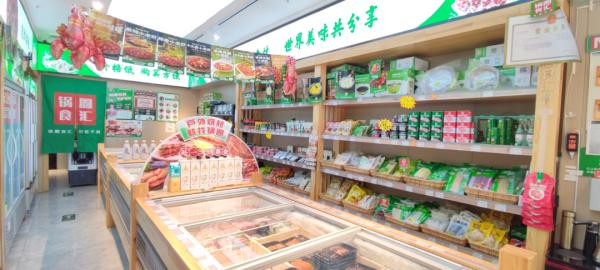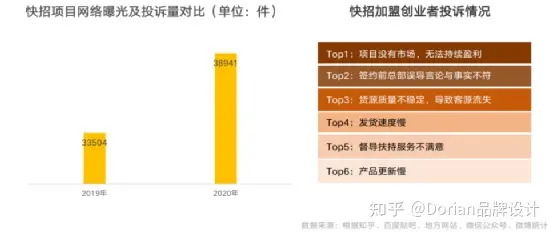王義桅:用辯證法回應質疑和不解(中英文)

Wang Yiwei:Answering questions and puzzles with dialectical methods
文 王義桅
王義桅:中國人民大學國際關系學院教授,歐洲“讓-莫內”講席教授,《一帶一路報道》特聘專家。
面對“一帶一路”倡議,由于不了解或者誤解,國內外出現了一些不同的聲音,作者及時地、有針對性地、系統地回應了對“一帶一路”倡議的質疑之聲,厘清各種似是而非的言論及有意無意的誤解,幫助讀者走進“一帶一路”,走出認知誤區。
中國有多大能耐,能帶動那么多國家發展?“一帶一路”是否導致中國過度擴張,使其陷入大國興衰律?來自國內外的這些質疑和不解大多未能以辯證法準確把握“一帶一路”。
How capable is China to boost the development of so many countries? Will the Belt and Road lead to the excessive expansion of China and trap it into the law of prosperity and decline of big powers? Those questions and puzzles from home and abroad should be ascribed to a failure of understanding the dialectical methods of the initiative.
中企承建的烏茲別克斯坦最大聚氯乙烯生產項目投產,烏總統米爾濟約耶夫(右)按下啟動按鈕 (圖 新華社)
一、虛與實:“一帶一路”既是山水畫也是油畫
I. The Belt and Road is both landscape and oil paintings
一些西方人習慣用看油畫的心態質疑“一帶一路”倡議,認為它缺乏清晰的內涵、路線圖,其實“一帶一路”不是簡單的倡議,是愿景和行動的結合,是內外發展的結合,用習近平主席的話來說:“‘一帶一路’建設不是空洞的口號,而是看得見、摸得著的實際舉措,將給地區國家帶來實實在在的利益。”因此,對外講“一帶一路”既要注重寫意,也要兼顧寫實。對世界與地區大國、文明古國可以宏大敘事,著眼長遠,激勵文明的共同復興;對小國、弱國則應注意細節,多講“一帶一路”給當地、當下帶來的好處。
Some Westerners question the Belt and Road Initiative with a habit of looking at oil paintings, thinking that it lacks clear connotation and road map. Actually, far from a simple initiative, it is the combination of vision and actions, and aims at both external and internal development. Just as what President Xi Jinping has noted: “The Belt and Road building is not an empty slogan, but a practical endeavor that can be seen and touched, and will bring tangible, immediate benefits to regional countries.” In this connection, in building the Belt and Road, we should focus on both immediate and long-term interests of partner countries. In engaging with global and regional powers, and countries with ancient civilizations, we can value more on long-term interests and inspire the common revival of civilizations; while engaging with small and poor countries, we should focus on details and pay more attention to immediate interests to local communities.
中國援建的中馬友誼大橋(新華社記者 杜才良 攝)
二、沖突與融合:文明的斷裂帶也是文明融合帶
II. Conflicts and integration: The fracture zone of civilization is also the fusion zone of civilization
盡管“一帶一路”涉及的很多經濟體處在歐亞大陸文明斷裂帶,但是我們也應看到文明的融合,比如巴米揚大佛就是活生生的例證。因此,建設“一帶一路”要樹立辯證思維,既要看到不可避免的風險,也要看到切實存在的機遇;既要看到文化、語言的隔閡,也要看到民心相通存在千年之久,共同的歷史記憶隨處可見。這也是為什么“一帶一路”強調“五通”中的“民心相通”。
Although many economies involved in the initiative are located in the Eurasian Civilization Fault Zone, we should take notice of cultural integration, with Bamiyan Buddha as a shining example. Therefore, we have to take a dialectical approach to the Belt and Road building and admit that there are tangible opportunities as well as inevitable risks. We should admit that there are people-to-people bonds that stretch back millennia and ubiquitous, shared historical memories, as well as cultural and language differences. That is why the initiative values people-to-people ties.
三、供給與需求:信息對稱的供需革命——需求創造供給
III. Supply and demand: a supply and demand revolution with information symmetry-demand creates supply
建設“一帶一路”,源于共建國家對中國優質富裕產能的渴求,故此形成國際產能合作與裝備制造合作機遇,其中更多的還是共建國家發展的客觀需要。“一帶一路”共建國家的產出與其人口在世界上的比例嚴重不匹配,前者只有后者的一半,因此,中國的“一帶一路”倡議才如此受歡迎。
The vision of building the Belt and Road originates from partner countries’ demands for China’s quality and abundant production capacity. Based on that, opportunities for international production capacity cooperation and equipment manufacturing cooperation have been generated, most of which come from those countries’ objective demands for development. Serious unbalance exists between the output share of those partner countries and their proportion of population in the world, with the former being only half of the latter. That is why the China-initiated Belt and Road is so welcome.
5月25日,克羅地亞總理普連科維奇(左一)視察佩列沙茨大橋建設情況(圖 新華社)
四、機遇與風險:機遇中蘊含著風險,風險中包含機遇
IV. Co-existence of opportunities and risks
如何讓更多國家感受到“一帶一路”的誠意,這就需要我們建立“一帶一路”的樣板房、示范區,形成“抓住中國機遇,早得益;杜撰中國威脅,早受累”的景象。講“一帶一路”不可把機遇講得太滿、太多,一定要客觀、冷靜分析風險,否則對方會質疑“有這么好嗎”,正因為有風險在,更需要共商共建共享。主動講問題和風險,這也體現了中國人的自信和擔當。
To make more countries feel the sincerity of the Belt and Road, we should set role models and demonstration zones, and shape the phenomenon of “benefiting early by grasping Chinese opportunities and suffering for publicizing China threats”. We should not speak too much about the opportunities of the initiative, or be too optimistic about them. Rather, we should make objective and calm analysis of risks. Otherwise, other countries will question the merits of it. The existence of risks makes it all the more necessary to enter consultation, seek co-building, and share benefits. We should be the first to mention problems and risks, which shows the confidence and sense of responsibility of Chinese people.
五、中國的與世界的:源于中國而屬于世界
V. Of China and the world: originating in China and reaching to the whole world
“一帶一路”是中國的,還是世界的?這是一些人的疑問。其實,開放與包容、兼收并蓄、融會貫通,這是中國崛起的秘訣,也是“一帶一路”建設的要旨。“一帶一路”源于中國而屬于世界。它既是中國模式的體現:基礎設施+教育(要致富,先修路;要快富,修高速。再窮不能窮教育,不把貧困傳給下一代),也在幫助實現聯合國2030年可持續發展議程。比如,世界還有九億多人生活在沒有通電的環境中。中國已全部通電,國家電網長距離、特高壓輸電網能力世界最強,能實現成本最小化,推動人類實現共同現代化。北斗導航系統2020年已實現全球覆蓋,不像全球定位系統( GPS)依賴網絡,更有利于發展中國家遠程教育、掃除文盲、脫貧致富。簡單來講,信息和通信技術業務有助于落后國家實現“變道超車”。
Does the Belt and Road belong to China or the world? That is a question puzzling some people. Actually, openness and inclusiveness are the secret behind China’ s rise, and also the essence of the Belt and Road building. The Belt and Road originates in China and yet belongs to the whole world. It epitomizes “the China model” : infrastructure+education (To become rich, build roads; to become rich quickly, build expressways. No matter how poor we are, we can never neglect education and we should not pass poverty onto the next generation). It is also helping realize the UN 2030 Agenda for Sustainable Development. More than 900 million people in the world still live in an environment without electricity, and India alone has more than 300 million. Now electricity is available in each corner of China. With the world’s strongest long-distance, UHV transmission grid capability, State Grid is working to minimize costs and contribute to universal modernization of mankind. Beidou Navigation System has realized full-coverage globally in 2020. Unlike GPS, which relies on network, it is more capable of empowering distance education, illiteracy eradication, and poverty reduction in developing countries. To put it simply, information and communication technology services can enable underdeveloped countries to “overtake on the bend”.
6月23日,北斗三號全球衛星導航系統最后一顆組網衛星在西昌衛星發射中心點火升空(胡煦劼 攝)
六、市場與政府:政府推動、企業主體、市場化運作,是“一帶一路”建設的思路
VI. Market and government: the Belt and Road building features government promotion and market operation, with enterprises as major players
讓市場起決定性作用,這一判斷也適合“一帶一路”建設。讓企業,尤其是公私合營企業,成為“一帶一路”的主體,通過市場化運作,符合國際規則,才能打消國際疑慮, 更好地與其他合作架構、發展規劃對接。國有企業開始在各類企業中起主要作用,但在市場化較高的國家,就要注意反傾銷、反補貼的問題,因為絕大多數共建“一帶一路”國家是WTO成員國。
In the Belt and Road building, we also follow the policy of allowing a decisive role of the market. Enterprises, especially joint state-private enterprises, should be the leading players of the Belt and Road building and engage in market-oriented operation by embracing international rules. That is how we can dispel misgivings in international community, and integrate with other cooperation frameworks and development plans. Among various enterprises, SOEs are now showing a major role. Yet in highly market-oriented countries, we should pay attention to anti-dumping and anti-subsidy issues, since the majority of the partner countries are WTO members.
中方承建的馬爾代夫最大保障房項目,徹底改善當地人民居住條件(圖 國際在線)
七、取與予:多予少取乃正確的義利觀
VII. The right approach to principles and interests: giving more and taking less
“一帶一路”沿線國家的經濟總量占世界的29%,而人口占63%,換言之,“一帶一路”沿線多為發展中國家,一方面潛力大,另一方面要求我們先予后取、多予少取,甚至要轉讓技術。在聯合國2030年可持續發展議程框架下幫助他們脫貧致富,這是建設“一帶一路”應樹立的一般心態。畢竟,“一帶一路”是百年工程,要從改革開放前階段的“互利雙贏”向“合作共贏”的思維轉變,利我與利他結合、雙邊與多邊結合、取與予結合,既要授人以魚,也要授人以漁,只有這樣才能延伸國內市場,建設歐亞非大市場。
With 63% of the world’s population, countries along the Belt and Road contribute to 29% of global economic aggregate. That is to say, most of those countries are developing ones. On one hand, those countries have huge potential; on the other hand, China needs to give out first before taking, give more and take less, and even transfer technology. That is something we should bear in mind as China helps those countries in poverty reduction under the UN 2030 Agenda for Sustainable Development framework. For such a century-old initiative as the Belt and Road, we should shift the thinking of “win-win” embraced during the early stage of the reform and opening up to “win-win cooperation”, allow for others’ interests as well as our own, take both bilateral and multi-lateral approaches, and give out while taking. While seeking our own development, we should teach other countries how to realize better development. That is how we can expand domestic market and build a large market across Europe, Asia, and Africa.
八、知與行:知行合一
VIII: Walking the talking
共商共建共享是“一帶一路”建設的原則,但這不能停留在口頭上,而要落實到具體行動中。如何在“一帶一路”建設中貫徹“知行合一”的理念?這是巨大考驗。尤其是許多國內企業、地方團體借助“一帶一路”“走出去”,更要與共建國家合作,做到“知行合一”。
Consultation, co-building, and benefit-sharing is the principle of the Belt and Road building. Rather than see it as only a slogan, we should follow the principle in real actions. How to walk the talk in the Belt and Road building? That is a huge test for us. Especially, as many domestic enterprises and regional organization go global by taking advantage of the Belt and Road, they should cooperate with partner countries to walk the talk.
中俄法三國共同合作開發的亞馬爾液化天然氣(LNG)項目(圖 俄羅斯諾瓦泰克公司)
九、干與學:干中學,學中干
IX. Learning by doing, and doing while learning
“一帶一路”是干中學,學中干。中國是學習型大國,也有責任分享發展經驗,“一帶一路”就是學習效益的體現。共商共建共享原則也讓中國與沿線國家的共同學習成為常態,甚至要共同摸著石頭過河,探索合作新途徑,解決建設中面臨的各種問題,開創21世紀地區與國際合作新模式。
In building the Belt and Road, China follows the approach of learning by doing and doing while learning. As an avid learner, China has the duty of sharing development experience with other countries. In terms of the benefits of learning, the Belt and Road serves as a good example. The principle of consultation, co-building, and benefit-sharing has made collective learning among China and partner countries a normal. They even should wade across the stream by feeling the way, and explore new path of cooperation to cope with various issues emerging in the process of co-building, and embark on a new model of regional and international cooperation in the 21st century.
十、地方與中央:地方(城市)和國家的創新合作
X. Innovative cooperation between localities (cities) and the state
地方還是中央?這本不是個問題,地方與中央同時發力才給建設“一帶一路”帶來雙引擎。但由于共建“一帶一路”國家政治體制不一,合作機制可以主要在地區國別和專業領域兩個方面展開。地方政府、城市如何參與“一帶一路”?中歐班列(成都—羅茲)連接的兩地間的交流合作,為城市如何進行外事外交樹立了榜樣。過去,中國企業走出去重視與對方政府打交道,不夠重視社會層面溝通,與當地的非政府組織打交道缺乏經驗。如今“一帶一路”要接地氣,要讓“中國制造”“中國建造”“中國服務”等飛入“一帶一路”尋常百姓家,從全球化向本土化轉變。
Which one should be the driving force, localities or the central government? This is not a problem, since the joint forces of localities and the central government constitute the dual engines for the Belt and Road building. Given the differences in political systems of partner countries, the cooperation can be pursued by region and country, and field. How should regional governments and cities engage in the Belt and Road? The bilateral communication and cooperation enabled by the China Railway Express (Chengdu-Lodz) has set a role model for inter-city diplomacy. In the past, Chinese enterprises valued engagement with foreign governments as they sought overseas presence, and paid less attention to people-to-people exchanges. As a result, those enterprises lack experience in dealing with local NGOs. Now, in the Belt and Road building, we should make “made-in-China”, “constructed-by-China”, “Chinese services” and other Chinese offerings reach to households of countries along the route, and shift from globalization to localization.
來源:《一帶一路報道》2020年第4期
更多精彩詳見《一帶一路報道(中英文)》↓↓↓
國內統一連續出版物號:CN 51-1788/F
國際標準連續出版物號:ISSN 2096-2886
郵發代號:62-625
聯系電話:(028)85471528 86529118
郵箱:thebeltandroadrpt@163.com
聲明:1.凡來源為“一帶一路報道”的作品,版權屬于“一帶一路報道”雜志社,任何第三方轉載均應注明“來源:一帶一路報道”;2.轉載其他媒體作品的目的在于傳遞更多信息,并不代表本刊贊同其觀點或對其真實性負責。任何第三方轉載時須保留“來源”;3.若涉及版權問題,請作者持相應版權證明與我刊聯系,核實后將依照相關規定支付稿酬;4.如因作品內容、版權和其他問題需要與我刊聯系,請在該事由發生之日起30日內進行。
編輯:李卉嬪
審核:向雯
主編:鄧灼
冷鏈服務業務聯系電話:13613841283

標簽:
食品安全網 :https://www.food12331.com

 冷鏈新聞
冷鏈新聞 企業新聞
企業新聞 展會新聞
展會新聞 物流新聞
物流新聞 冷鏈加盟
冷鏈加盟 冷鏈技術
冷鏈技術 冷鏈服務
冷鏈服務 冷鏈問答
冷鏈問答 網站首頁
網站首頁 冷鏈新聞
冷鏈新聞



